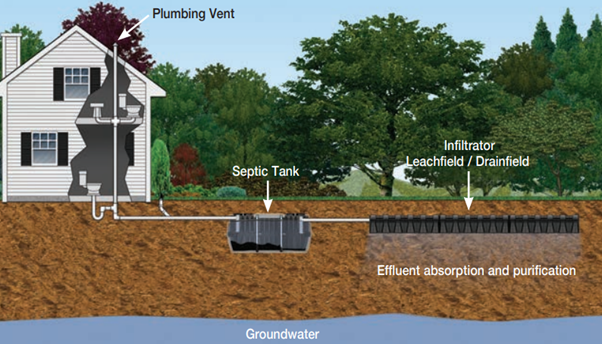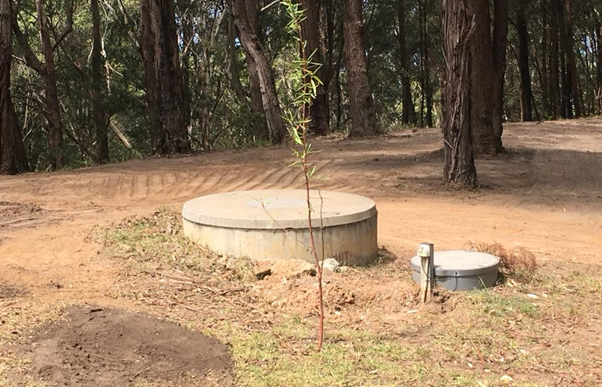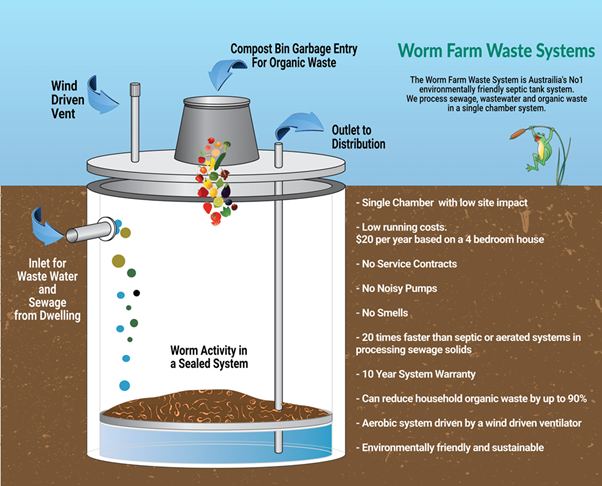When buying land you may be interested in a block that isn’t connected to town services. In these cases, you’ll need to arrange for the necessary facilities to be installed on-site or for services to be connected.
Our team has helped customers across Victoria and New South Wales with this process, including selecting the right system for their block. So if you’re considering building on a new block, read on to find out how to find the right solution for your land.
What are site services?
The most notable site utilities include electricity, water, and sewerage. While some building sites have available connections in place, many require off-grid solutions instead.

Water Supply
Town water services are often not connected to rural locations so you’ll likely need to install a water tank. Try to install enough tanks so you never run out of water – especially if you are building in a drier area that is prone to drought.
Power supply
While most rural sites will already have a power connection to them, you’ll usually need to run power connections to your house site. You can either dig a trench or run an overhead power line but the distance will dramatically increase the cost. Solar power is another option, either as a supplementary source of power or as your main source of electricity.
Septic Systems

If you buy land in an urban environment, you may be able to connect your new home to the town sewerage system. However, if your land is too far from the water board or council sewage pipes, it may not be viable to connect it. In this case, a septic system will need to be installed.
Land Capability Assessments (LCA)
Most Councils require a Land Capability Assessment (LCA), which is a detailed assessment based on soil percolation testing. An engineer will assess the test results and determine the viability of on-site wastewater on your property, identifying the risks presented to the environment, public health, and local amenities.
The LCA will also include recommendations on the best type of septic system to use, where it should be positioned, and any other strategies to minimise the impact on the environment. There are many different types of septic systems available on the market so we’ve listed the main four systems we work with below.
Primary Septic System
A primary system is the cheapest and simplest option on the market, consisting of a single septic tank and an absorption trench. They rely on gravity to feed effluent through the trenches. No regular servicing is required as they are not mechanical, but you will need to de-sludge the tank every 3 to 5 years.
Recently, primary septic systems have become less common because they are not often approved by councils and produce poor-quality effluent. Additionally, they are generally not allowed on blocks smaller than two acres or in environmentally sensitive areas.
Aerated Wastewater Treatment System (AWTS)
The most common system at Anchor Homes is the AWTS which stands for Aerated Wastewater Treatment System. These are extremely versatile as they can be used on sloping sites and sites with limited space. The AWTS system usually consists of multiple tanks or a large tank with multiple chambers, including an aeration chamber.
These systems do require quarterly servicing and a de-sludge every 3 to 5 years to ensure maximum life from the system.
Sand Filter
Sand filter systems consist of a septic tank, sand filter, and subsurface irrigation. They are only suited to larger sites as you need ample space to house all the separate components including the tank, sand filter, pump well and absorption trenches.
Sand filter systems need to be serviced annually and de-sludged every 3 to 5 years to ensure optimal performance and longevity.
Composting systems and worm farms
Composting is a sustainable option that is simple to set up, with all the sewage piped directly to a colony of active compost worms. The worms eat through the bacteria, killing the harmful bacteria and turning the waste into vermicast with zero toxicity. It then soaks through to fertilise the soil.
A service is recommended six months after installation and then every two years after that.

Image credit: https://www.wormfarm.com.au/
Site Work for Modular Homes
Here at Anchor Homes, we’ve worked on building sites all over Victoria and New South Wales. In that time, we’ve seen a wide range of properties with varying levels of site connections in place. That means we know all the best options for connecting your new home and how to prepare for the build ahead.
If you’re looking for land or already have a block in mind, we’re here to help! Contact us today for our expert advice, our recommended solutions, and information on your next steps.
